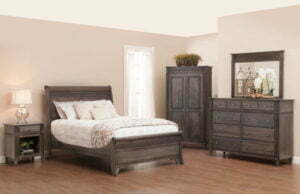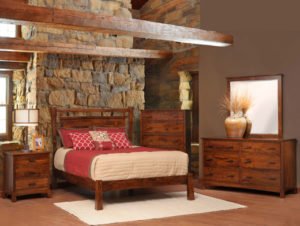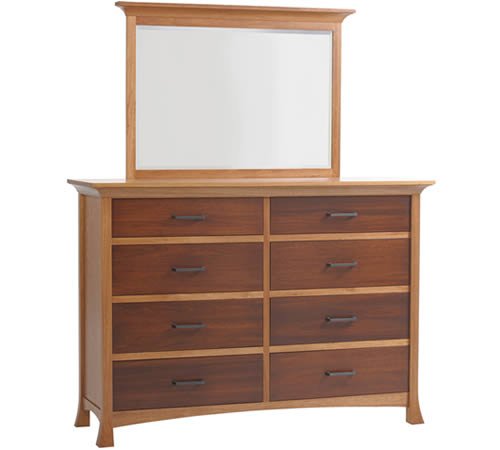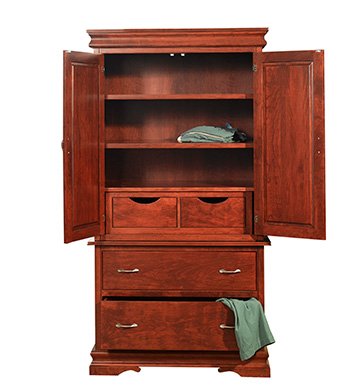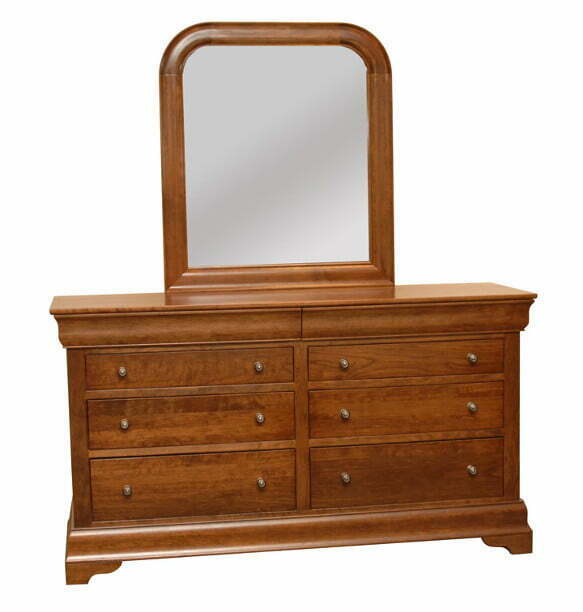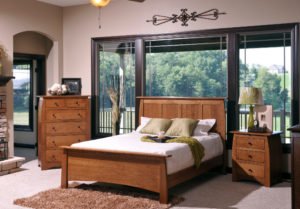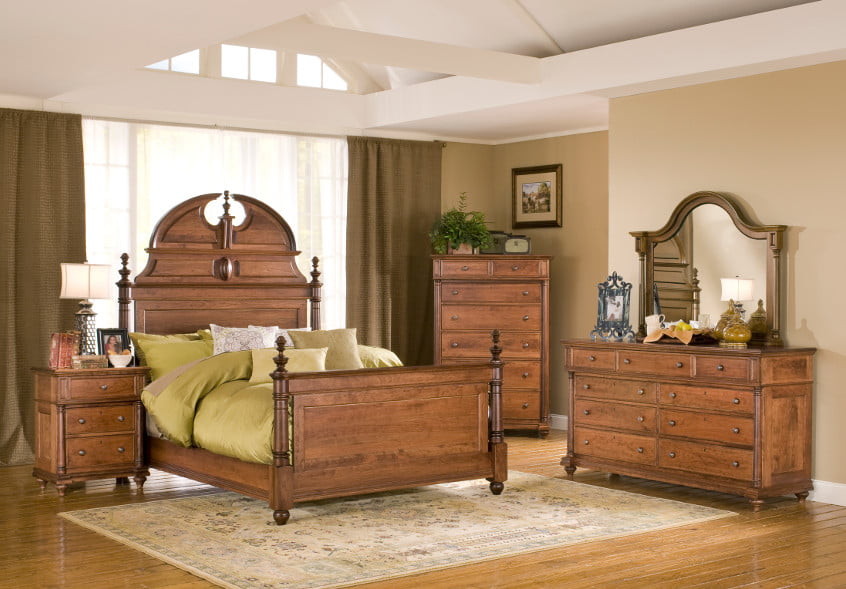Amish Furniture
Amish Built Bedroom open stock Collections. Choose the style, size and wood finish–most come in your choice of solid maple, solid oak or solid cherry. Hand crafted in America by people who know and understand solid wood and how to build furniture the right way.
Amish built furniture continues the great American tradition of solid wood and hand-built craftsmanship. This is furniture your family will treasure for generations—your great-grandchildren will be glad you bought the best. Most pieces are available in your choice of solid cherry, maple, quarter-sawn oak, Appalachian oak or walnut. This kind of quality is surprisingly affordable. Let our designers help you choose the bedroom, dining room or home office and entertainment pieces that are perfect for your home.
Craftsmanship is alive and well in America.
In this age of technology can you imagine an industry that shuns it, and prospers by hanging on to ancient traditions and beliefs? There is a thriving industry that has avoided electricity, the telephone, FAX machine, computers and even motor cars and trucks. That is the Amish Furniture industry.
Amish Furniture is made in Factories in Pennsylvania, Ohio, Indiana and other states. Because of their religious beliefs, the Amish shun any technology that was not available to them in the eighteenth century.
Traditional styles—there is nothing new. Georgian, Colonial, Victorian, Shaker, Arts & Crafts (Mission), art deco, transitional, are built by the Amish. They can make anything that someone else has already designed.
Small family shops—There is no mass production. Each piece is individually made so a consumer can select species of wood (cherry, oak, maple, walnut, hickory, etc; Change dimensions to suit the needs; Choose the final finish (reddish, brownish, golden, natural, etc)
Amish factories have low overhead. Amish entrepreneurs save their money so they can pay cash for equipment and supplies. They do not believe in debt. The community has their own “in house” health care and retirement systems and avoids social security and medicare. Factory owners do not drive late model Mercedes automobiles. Many drive those cute horse-drawn Amish wagons that tie up highway traffic around Lancaster PA and Millersburgburg OH. And, they don’t like to have their pictures taken.
The Quality of Craftsmanship—The workers lead a simple life and spend years at the same job and become expert at all phases.
They live in the 18th century—No electricity, no television, no motor vehicles. On a recent visit to Lancaster County, PA I saw dozens of horse-drawn buggies trotting down the highways. It is amusing to see the big trailer trucks stopping for them There are no overhead power lines leading to the scenic farms.
Amish factory owners know about those new inventions like the telephone and the motor car and have adapted. They will own a car or truck and ride in it but hire a non-Amish to drive it. They will allow telephones and FAX machines as long as someone else uses them and delivers the message. Many factories refuse to have websites but they will post pictures of their product line on a commercial website.
They are masters of 18th-century technology. Factories are lighted by big windows and reflective skylights and gas lighting. They use a lot of pneumatic tools. Factories that have telephones and answering machines keep them outside the factory in an outbuilding. One factory owner tells me he goes out back to the phone shed 3 or 4 times a day to check for messages. Another fellow told me his FAX machine is in his driver’s kitchen and the driver brings in the orders every morning. Delivery truck drivers are usually Mennonite, cousins of the Amish who are allowed to drive and live in the present.
They don’t tolerate waste! Most Amish factories do not carton or crate furniture—it is shipped on moving vans equipped with piles of blankets to carefully wrap everything.
The Amish furniture has existed for years but was virtually unknown outside their local areas. They did not understand cartooning or trucking so the only stores that showed the goods were the ones that could drive to the plant and pick up the goods. The major markets were Philadelphia, Baltimore, and Cleveland which are within an easy driving distance of the communities.
Amish are practical. They make very few upholstered items and these are limited to solid wood-framed sofas and Morris chairs with fabric or leather covered seat and back cushions.
Food seems to be their major past time and they excel in building dining chairs and tables.
Farming and woodworking are the major sources of employment in the Amish Communities. Between the two trades, most Amish men can find work year round.
The export of so many American furniture manufacturing jobs left a huge gap in the marketplace. Asian factories depend on volume to stay busy. Asian workers can quickly be trained to perform a single manufacturing task rather than be trained as cabinet makers. The limited skills of dozens of workers go into making each piece. These factories must build hundreds of the same item to get the economy of scale. Quality can vary because worker turnover is fast and frequent. This kind of price competition caused the American high-quality solid wood furniture industry to virtually disappear.
Thanks to the Amish, who could not send their jobs overseas, this industry is recovering. There are no high volume shops today but there are hundreds of small independent factories that when combined can turn out the same volume as some of the larger well-known older companies. Once you adapt to their ways they are a pleasure to deal with. Their furniture makes the extra effort worthwhile
Please Visit The Manufactures Sites Above By Clicking On Their Logo
If You See Something You Like, Please Use The Form Below To Request More Information – So We May Order The Item(s) For You. In Some Cases, We May Have it In Store Already.


